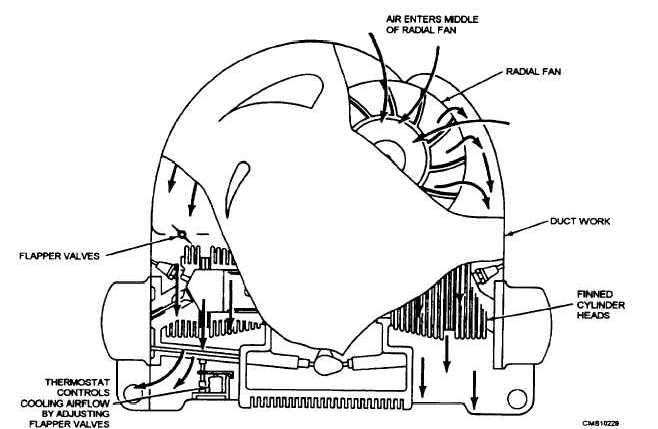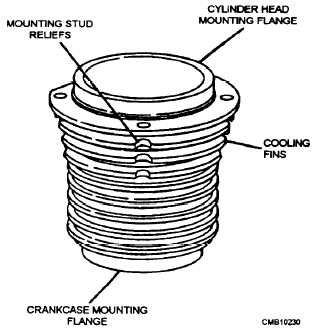
Figure 6-1. - Air-cooled system.
types, and the discussion will include a description of the various components of the systems and an explanation of their operation.
AIR-COOLED SYSTEM
The simplest type of cooling is the air-cooled, or direct, method in which the heat is drawn off by moving air in direct contact with the engine (fig. 6-1). Several fundamental principles of cooling are embodied in this type of engine cooling. The rate of the cooling is dependent upon the following:
The area exposed to the cooling medium
The heat conductivity of the metal used & the volume of the metal or its size in cross section
The amount of air flowing over the heated surfaces
The difference in temperature between the exposed metal surfaces and the cooling air
Some heat, of course, must be retained for efficient operation. This is done by use of thermostatic controls and mechanical linkage, which open and close shutters to control the volume of cooling air. You will find that air-cooled engines generally operate at a higher temperature than liquid-cooled engines whose operating temperature is largely limited by the boiling point of the coolant used. Consequently greater clearances must be provided between the moving parts of air-cooled engines to allow for increased expansion. Also, lubricating oil of a higher viscosity is generally required.

Figure 6-2. - Air-cooled cylinder.
Continue Reading